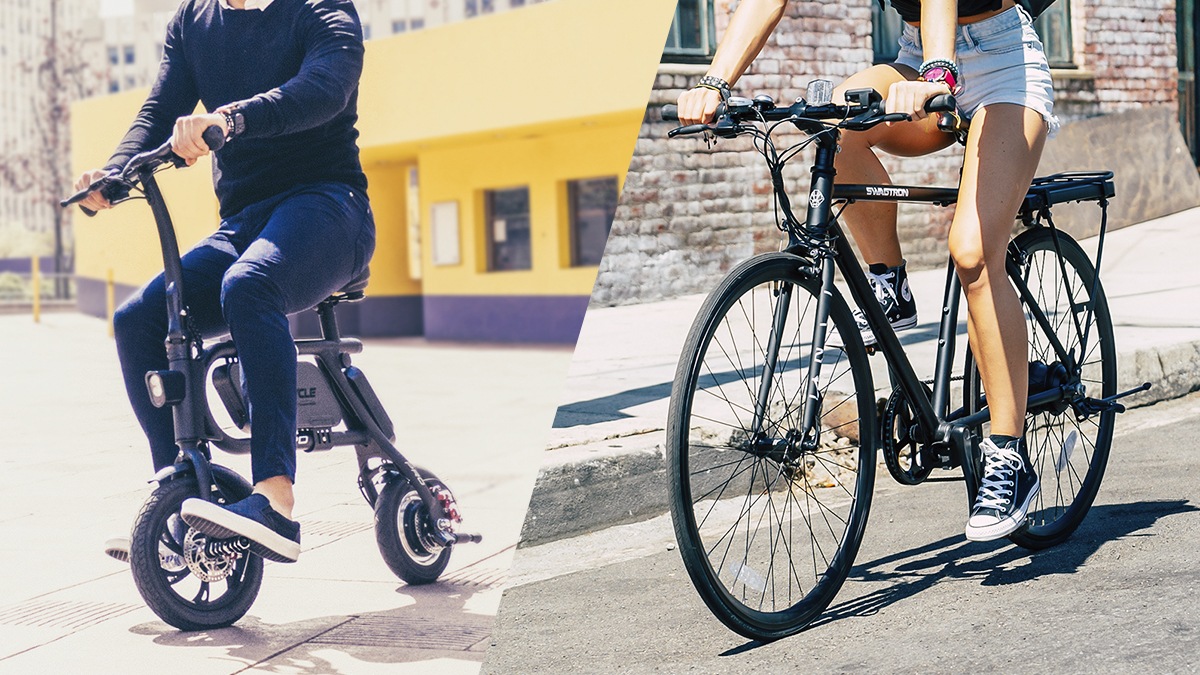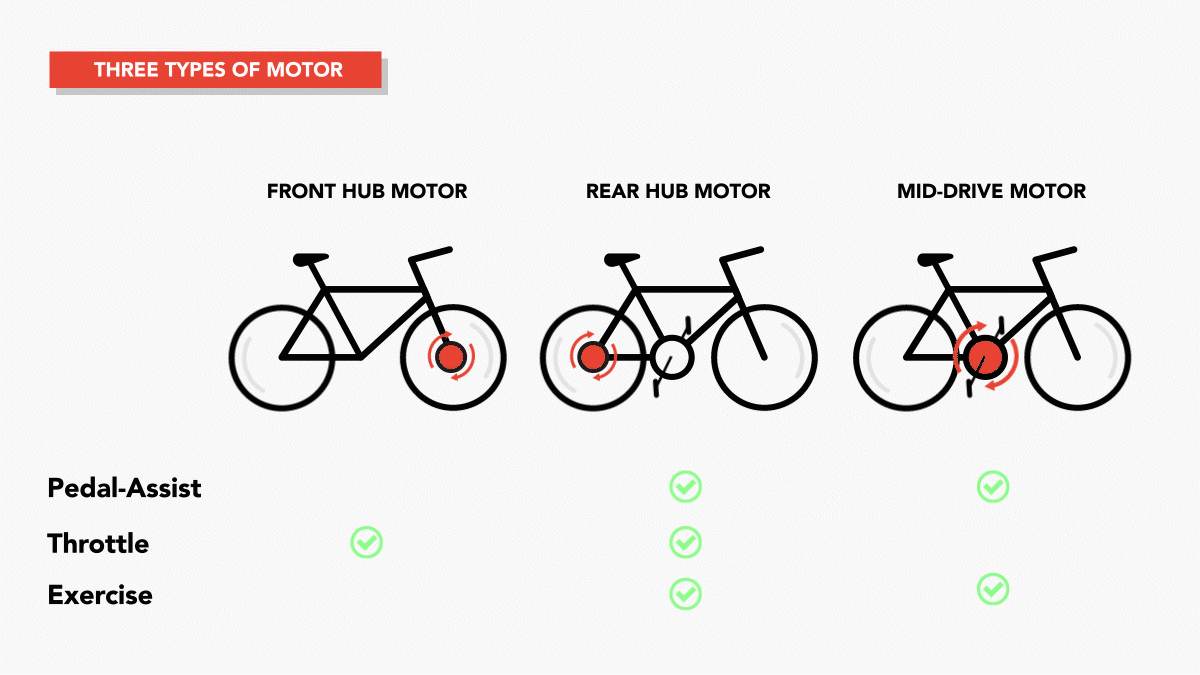
Electric bikes continue to gain popularity. Even though they’ve been around for a few decades, they are just now gaining the EBikes are the next wave of cycling technology, and now is the best time to get acquainted with the different types of eBikes. The best eBike for you is the one that’s designed for your riding needs, whether you want a basic commuter model or one that can conquer tough hills and haul home the groceries.
A Quick Reminder: Benefits of eBikes
Electric bicycles combine the best of two worlds: technological innovation and manual exercise. If you’re the type of person who likes to be the first to own the latest trend, it may be time to look into an electric bike. Outside of being a trendsetter, there are many benefits to owning an eBike. They are highly versatile and can be used in place of a vehicle for regular commutes, on mountain biking trails and to pull a trailer of your tiny little ones.
They’re also great for getting in shape. Studies show that riding an eBike results in the same amount of exercise as riding a traditional bike. The only difference is that on an eBike you’re more comfortable throughout the ride since the motor kicks in and assists you with tough hills or long routes. That extra kick can be enough to help you zip through traffic jams in the city or keep up with — and pass — a friend who is a more proficient cyclist.
Three Main Types of eBikes
Before you can start zooming down city streets, you need to purchase an electric bike, and that requires you to choose between one of three varieties of eBikes. Luckily, it’s not so hard to break down the different eBike types, and even a novice biker should be able to shop for a suitable model without too much confusion.
- No-Pedal/Throttle-Only:The throttle-only eBike propels itself forward, much like an electric scooter or motorcycle, through the use of a motor and battery. True to the name, no pedaling is required. In fact, in some throttle-only eBikes, like our Swagcycle Pro and Swagcycle Envy models, pedaling simply isn’t an option. There are no pedals. For this reason, a lot of people tend to view these models more like a seated electric scooter in the shape of a bike, more than an actual eBike. These electric bikes are classified as a Class 2 eBike — or “low-speed throttle-assisted electric bicycle” — able to reach speeds between 10-15 mph. (See our article, “eBike: Understanding the Three (Legal) Classifications” for more info.) Because of this, a lot of parents have started treating pedal-less eBikes more like a “starter eBike” for their younger kids, before agreeing to give them a full-fledge electric bicycle.
- Pedal-Assist/Pedelec: With this popular type of eBike, the motor augments the mechanical power delivered by the rider when then pedal. For a pedelec (pedal electric cycle) eBike to help with propulsion, the rider must be pedaling. This will help you achieve higher speeds or climb hills easier. You can adjust the amount of assistance you receive from the motor to fit your personal needs, but most pedelec bikes can reach speeds of around 20 mph. Despite their motors, pedal-assist eBikes hold a Class 1 designation, which allows you to use them on paths or roads without special licensing.
- Speed Pedelec:As the name implies, this class of eBike offers riders a burst of speed due to its higher threshold for power. This is considered by far the fastest “legal” eBike available, with most models capable 28 mph speeds. Despite the speeds possible, these types of electric bikes don’t require a driver’s license, but there is an age limit associated with its use (usually 17 years of age, minimum). But, as always, check with your city and state laws, for there may be slight differences as well as additional requirements, such as helmets. (Although, we recommend always wearing helmets and protective gear while riding eRideables of any kind.) And, as with the other eBike classifications, a city or state can limit where you can ride this particular eBike.

What Motor Should My eBike Have?
The motor that powers your bike is responsible for augmenting your ride, so it’s important to choose an eBike motor that fits your needs. Regardless of eBike type, model or class, most eBikes are equipped to handle one of three motors.
- Front Hub Motor:Front hub motors tend to work best with simple eBike designs and, as the name implies, sit at the front of the bike. These motors are usually installed on throttle-only eBikes because it’s difficult to offer pedal assistance when the motor isn’t integrated into the drivetrain.
- Rear Hub Motor:There are two different types of rear hub motors: direct-drive and geared hub. A direct-drive motor is best for fast commutes over mostly flat terrain; it can greatly enhance the exercise experience for the rider. A geared hub motor is a better option for climbing steep hills and carrying heavy loads. Despite its rugged capabilities, the geared hub still allows you to pedal a bike efficiently even after the battery drains. Rear hub motors are the most popular for electric conversions and can accommodate both pedelec and throttle-only electric bikes.
- Mid-Drive Motor:The mid-drive eBike motor is by far the most efficient of the three standard motor types. That efficiency lets them provide the longest range-per-charge. The m-id-drive motor also delivers a superior level of versatile riding experiences, from exercise and speed riding to commuting and long-distance travel. For the most part, mid-drive motors are lightweight, and their position in the center of the bike offers less impact on overall bike handling. Since the mid-drive motor is activated by pedaling, it can only be used on pedelec eBikes.

eBike Popularity
Across Europe, eCycles are gaining in popularity, and while the uptake in America has been a bit slower, electric bike use is on the precipice of exploding. Electric bikes are perfect for environmentally friendly transportation, managing hills and long-distance biking.
The popularity of eBikes continues to rise. This is in part due to innovation by brand leaders like SWAGTRON®, smaller and lighter batteries, and affordable pricing. The competitive market of eCycles includes many affordable models designed to fit every budget. When serving as a replacement for a vehicle, the cost of an eBike looks even more affordable, with many models from SWAGTRON, NAKTO and Walke priced between $299 and $999. (And recharging a battery is definitely less hassle — and less expensive — than gassing up a car.)
Now that you know a bit more about the main classes of eBikes and their respective motor options, it’s time to do some shopping. Take a minute to browse the available models of SWAGTRON eCycles to find the perfect fit for your needs. Is it trail-riding? Commuting to work or campus? Running errands? A first-time eBike for kids? Or just plain having fun? You can find it at SWAGTRON.